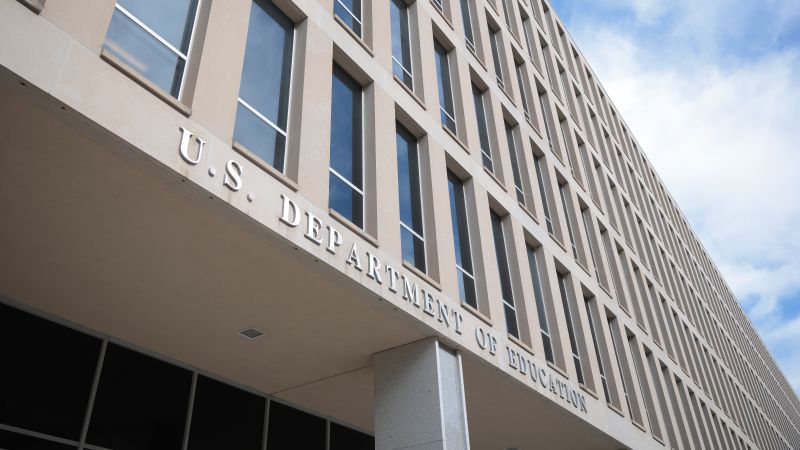The Unexpected Growth Of Horns On Rabbits: Causes And Concerns

Welcome to your ultimate source for breaking news, trending updates, and in-depth stories from around the world. Whether it's politics, technology, entertainment, sports, or lifestyle, we bring you real-time updates that keep you informed and ahead of the curve.
Our team works tirelessly to ensure you never miss a moment. From the latest developments in global events to the most talked-about topics on social media, our news platform is designed to deliver accurate and timely information, all in one place.
Stay in the know and join thousands of readers who trust us for reliable, up-to-date content. Explore our expertly curated articles and dive deeper into the stories that matter to you. Visit Best Website now and be part of the conversation. Don't miss out on the headlines that shape our world!
Table of Contents
The Unexpected Growth of Horns on Rabbits: Causes and Concerns
Rabbits, with their fluffy fur and twitching noses, are hardly creatures we associate with horns. Yet, anecdotal reports and veterinary case studies are increasingly highlighting the unusual phenomenon of horn-like growths appearing on rabbits. This isn't the fantastical mutation of a children's story; it's a real concern raising questions about causes, treatments, and the overall well-being of affected rabbits. This article delves into the mystery surrounding these growths, separating fact from fiction and exploring the implications for rabbit owners and veterinarians alike.
What are these "horns" on rabbits?
Before we delve into the causes, it's crucial to clarify what we're talking about. These aren't true horns, like those found on goats or cattle, which are bony outgrowths. Instead, these rabbit "horns" are typically cutaneous horn-like lesions. They are abnormal growths of keratinized tissue, similar to the material that makes up rabbit claws and hair. These growths can vary in size, shape, and location, often appearing on the head, but potentially anywhere on the body. They can be hard, pointed, and even resemble small, twisted horns.
What causes these horn-like growths in rabbits?
The exact etiology of these growths remains unclear, and research is limited. However, several factors are suspected to play a role:
- Papillomas: These are benign skin tumors caused by papillomaviruses. While not directly "horns," papillomas can sometimes develop into large, horn-like structures. This is potentially one of the most common underlying causes.
- Chronic inflammation: Persistent skin irritation, perhaps from wounds, parasites, or allergies, can lead to abnormal keratin production, resulting in these growths.
- Genetic predisposition: While not definitively proven, a genetic component might influence a rabbit's susceptibility to developing these lesions.
- Nutritional deficiencies: While less likely, some believe that certain nutritional deficiencies could contribute to abnormal skin growth. A balanced diet is crucial for a rabbit's overall health.
- Foreign bodies: In some cases, embedded foreign bodies, like splinters or grass seeds, might trigger the formation of these growths as the body attempts to encapsulate the irritant.
Diagnosing and Treating Rabbit Horn-Like Lesions
If you observe any unusual growths on your rabbit, it's essential to consult a veterinarian specializing in rabbits (a rabbit-savvy vet). They can perform a thorough examination, potentially including biopsies, to determine the underlying cause. Treatment will depend on the diagnosis:
- Papillomas: These can sometimes regress spontaneously, but veterinary intervention, such as surgical removal or cryotherapy (freezing), might be necessary.
- Chronic inflammation: Addressing the underlying cause of the inflammation is crucial. This could involve topical treatments, antibiotics, or anti-inflammatory medications.
- Surgical Removal: In many cases, surgical excision is the most effective treatment to remove the horn-like growths.
Preventing Horn-Like Growths in Rabbits
While prevention isn't always possible, providing optimal rabbit care can significantly reduce the risk:
- Regular veterinary check-ups: Early detection is key. Regular check-ups allow for early diagnosis and treatment of any skin abnormalities.
- High-quality diet: A balanced diet rich in fiber and low in sugars promotes overall health and strong skin.
- Clean and safe environment: Maintain a clean living space to minimize the risk of injuries and infections.
- Parasite control: Regular parasite checks and treatment are vital to prevent skin irritations.
The appearance of horn-like growths on rabbits is a relatively uncommon but concerning issue. With increased awareness and veterinary attention, we can better understand the causes, implement effective treatment strategies, and ultimately improve the welfare of our beloved bunnies. Remember, if you notice anything unusual, consult your veterinarian immediately. Early intervention is key to a positive outcome.

Thank you for visiting our website, your trusted source for the latest updates and in-depth coverage on The Unexpected Growth Of Horns On Rabbits: Causes And Concerns. We're committed to keeping you informed with timely and accurate information to meet your curiosity and needs.
If you have any questions, suggestions, or feedback, we'd love to hear from you. Your insights are valuable to us and help us improve to serve you better. Feel free to reach out through our contact page.
Don't forget to bookmark our website and check back regularly for the latest headlines and trending topics. See you next time, and thank you for being part of our growing community!
Featured Posts
-
 Aldo De Nigris Jr En La Casa De Los Famosos 3 Por Que Genera Tanta Controversia
Aug 16, 2025
Aldo De Nigris Jr En La Casa De Los Famosos 3 Por Que Genera Tanta Controversia
Aug 16, 2025 -
 9 1 1 Star Peter Krauses Unexpected Instagram Appearance Sparks Fan Euphoria
Aug 16, 2025
9 1 1 Star Peter Krauses Unexpected Instagram Appearance Sparks Fan Euphoria
Aug 16, 2025 -
 Taylor Swifts Eras Tour Analyzing Her Sparkling Stage Outfits
Aug 16, 2025
Taylor Swifts Eras Tour Analyzing Her Sparkling Stage Outfits
Aug 16, 2025 -
 9 1 1 Star Peter Krauses Surprise Instagram Appearance Sparks Fan Frenzy
Aug 16, 2025
9 1 1 Star Peter Krauses Surprise Instagram Appearance Sparks Fan Frenzy
Aug 16, 2025 -
 Motorlux Showcases Seven Dream Machines A Porsche Fighter Plane And More
Aug 16, 2025
Motorlux Showcases Seven Dream Machines A Porsche Fighter Plane And More
Aug 16, 2025
Latest Posts
-
 Court Blocks Trump Administrations Attempt To Limit Dei Initiatives In Higher Education
Aug 16, 2025
Court Blocks Trump Administrations Attempt To Limit Dei Initiatives In Higher Education
Aug 16, 2025 -
 Legal Victory For Dei Judge Strikes Down Trump Era Restrictions On Diversity Initiatives
Aug 16, 2025
Legal Victory For Dei Judge Strikes Down Trump Era Restrictions On Diversity Initiatives
Aug 16, 2025 -
 Wooler Playgrounds Long Road Back Reopening After Wwii Bomb Discovery
Aug 16, 2025
Wooler Playgrounds Long Road Back Reopening After Wwii Bomb Discovery
Aug 16, 2025 -
 Behind The Scenes With Kaitlan Collins National Guard And Trump Putin Summit Coverage
Aug 16, 2025
Behind The Scenes With Kaitlan Collins National Guard And Trump Putin Summit Coverage
Aug 16, 2025 -
 Taylor Swift Album Announcement Impact And Analysis From Billboard
Aug 16, 2025
Taylor Swift Album Announcement Impact And Analysis From Billboard
Aug 16, 2025
